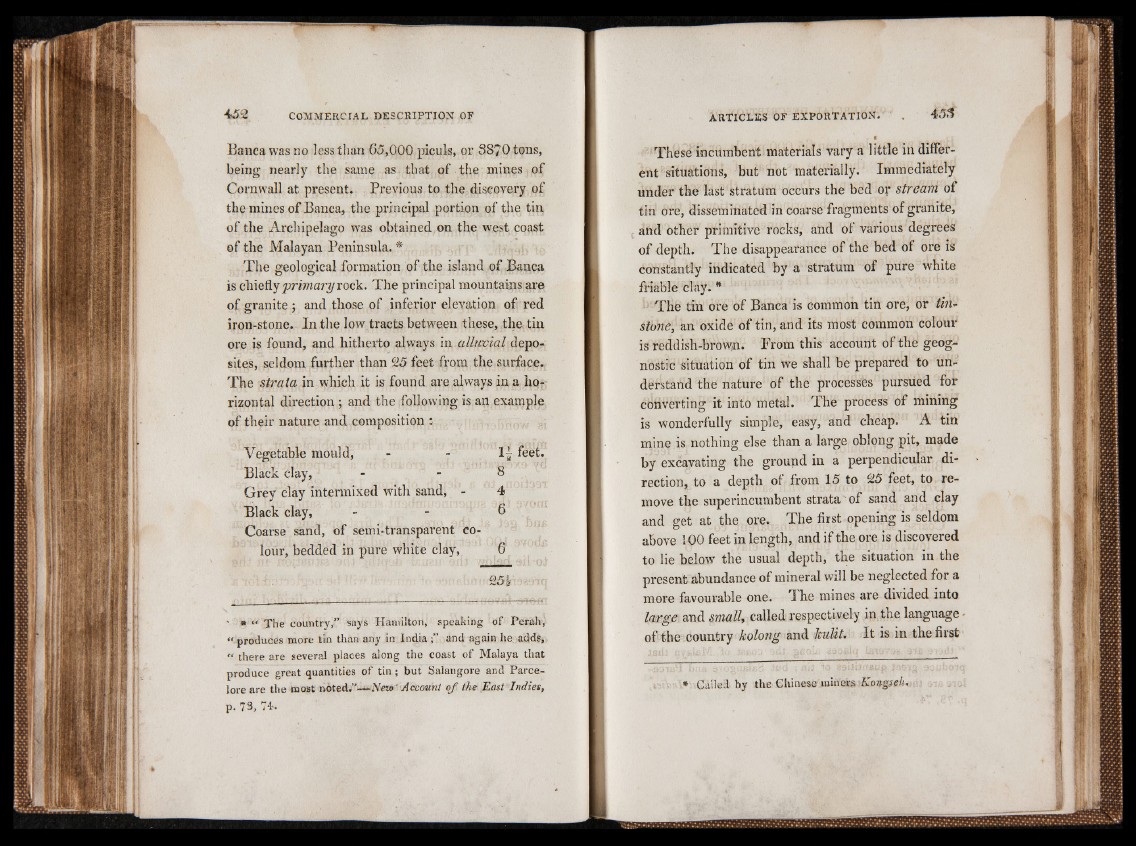
Banca was no less than 65,000 piculs, or S8 7 0 tons,
being nearly the same as that of the mines of
Cornwall at present. Previous to the discovery of
the mines of Banca, the principal portion of the tin
of the Archipelago was obtained on the west coast
of the Malayan Peninsula. *
The geological formation O o of the island of Banca
is chiefly primary rock. The principal mountains are
of granite ; and those of inferior elevation of red
iron-stone. In the low tracts between these, the tin
ore is found, and hitherto always in alluvial deposites,
seldom further than 25 feet from the surface.
The strata in which it is found are always in a horizontal
direction; and the following is an example
of their nature and composition :
Vegetable mould, 1
Black clay, - 8
Grey clay intermixed with sand, - 4
Black clay, - - 6
Coarse sand, of semi-transparent colour,
bedded in pure white clay, 6
2 5h
' * “ The country,” says Hamilton, speaking of Perah,
“ produces more tin than any in India and again he. adds,
“ there are several places along the coast of Malaya that
produce great quantities of tin ; but Salangore and Parce-
lore are the most noted.”— Neva Account o f the East Indies,
p. 73, 74.
ARTICLES OF EXPORTATION. , 45.1
i These incumbent materials vary a little in different
situations, but not materially. Immediately
under the last stratum occurs the bed or stream of
tin ore, disseminated in coarse fragments of granite,
and other primitive rocks, and of various degrees
of depth. The disappearance of the bed of ore is
constantly indicated by a stratum of pure white
friable clay. *
The tin ore of Banca is common tin ore, or tinstone,
an oxide of tin, and its most common colour
is reddish-brow,n. Prom this account of the geognostic
situation of tin we shall be prepared to understand
the nature of the processes pursued for
converting it into metal. The process of mining
is wonderfully simple, easy, and cheap. A tin
mine is nothing else than a large oblong pit, made
by excavating the ground in a perpendicular direction,
to a depth of from 15 to 25 feet, to remove
the superincumbent strata'of sand and clay
and get at the ore. The first opening is seldom
above 100 feet in length, and if the ore is discovered
to lie below the usual depth, the situation in the
present abundance of mineral will be neglected for a
more favourable one. The mines are divided into
large and small, called respectively in the language -
of the country kolong and kulit. It is in the first
* Called by the Chinese minera Kongselu